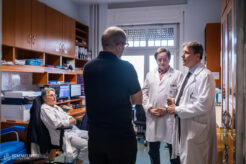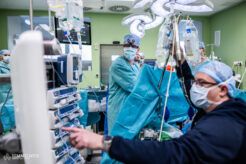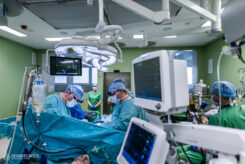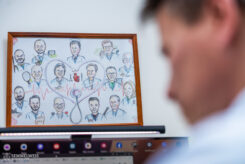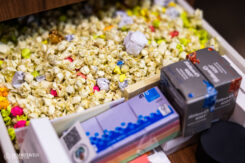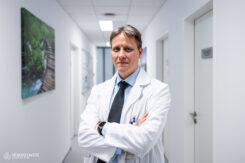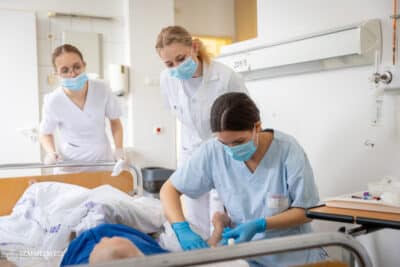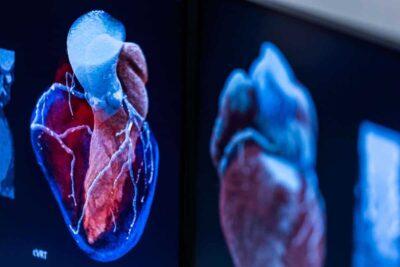As part of our ‘One day’ series, which takes a look behind the scenes at Semmelweis University, we now follow heart surgeon Dr. István Hartyánszky. He has been working for 27 years at his first and only place of employment, Semmelweis University’s Városmajor Heart and Vascular Center, which in its field is a leading center at the national, regional, as well as European levels. The associate professor is specialty lead head surgeon at the Városmajor Heart and Vascular Center, head of the Department of Cardiac Surgery, chairman of the National Heart Transplant Waiting List Committee, as well as former president of the Hungarian Transplant Society and the Hungarian Society of Cardiac Surgery.
Click on the pictures to read our photo report.
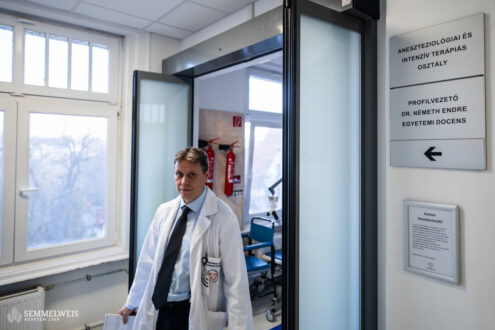
The corridor is still quiet, with barely any street noise, as Dr. István Hartyánszky is already emerging from the Department of Anesthesiology and Intensive Care at his usual brisk pace. The head of the Department of Cardiac Surgery at Semmelweis University begins every morning at the center in this way: with a routine “pre-agenda” round, checking on patients who have just undergone surgery or are in the most serious condition.
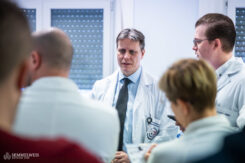
The morning begins: During his ward rounds, Dr. István Hartyánszky inspects every hospital room together with the night duty doctor, the team of heart surgeons on duty that day, and the nurses. The night duty doctor describes the current condition of the patients, reports on the events of the past few hours, and provides the most important information. During the rounds, Dr. István Hartyánszky pays attention to every patient individually: There is no one with whom he does not exchange a few words about their condition or what to expect in the future.
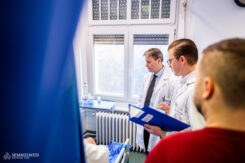
“Communication is extremely important in order to establish a relationship in which the patient feels safe. After all, they have to want to undergo the high-risk surgery that awaits them! They need to believe that it is necessary for their recovery! Although I have no scientific explanation for it, my experience is that if a patient is mentally and emotionally stable, accepts and wants the procedure, and has the support of their family or a loved one, the outcome is much more successful and recovery is faster.”

At 7:30 a.m., the doctors and residents from all the departments who are on duty that day, as well as the students, gather for the so-called “grand briefing,” which is usually attended by the Director of the Városmajor Heart and Vascular Center, Dr. Béla Merkely. The night duty doctors report on the current condition of the patients in the wards to the heads of the cardiac surgery, cardiology, and vascular surgery departments. Here they also gain an up-to-date picture of the capacity of the intensive care unit for that day, which is important information in terms of the surgical program.
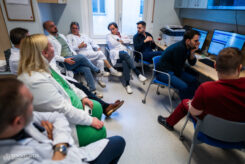
After the grand briefing, the team of heart surgeons also meets in a small group to plan the day’s surgical program by reviewing all the patients individually, looking at and analyzing their latest laboratory findings, discussing opinions and counterarguments, and considering the capacity of the operating rooms and intensive care unit. There are many young people in the team: As Dr. István Hartyánszky says, while elsewhere cardiac surgery as a profession may need to be promoted, in the Városmajor Heart and Vascular Center there is an oversupply of applicants.
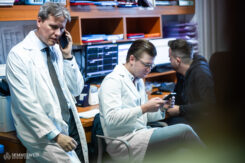
“The age pyramid is very good, and the team is new and inspiring. This is important as cardiac surgery is a team effort: cooperation between related fields and allied health professionals is key. At the same time, there are moments of solitude when you have to take responsibility, make decisions, and take action. It’s a bit like a soccer team full of Messis and Ronaldos. This can sometimes be difficult and fraught with friction, but in critical situations, there is no doubt that we can count on each other.”
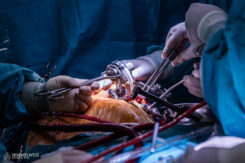
In accordance with the morning’s surgical schedule, we head to the operating room at around 10 a.m.: Dr. István Hartyánszky is implanting an artificial heart into a male patient’s chest – his 100th at the time of our report. During the nearly five-hour procedure, the artificial heart, measuring barely 10 centimeters, is implanted next to the patient’s heart: In the device weighing roughly 500 grams, a miniature pump replaces the function of the left ventricle, circulating the blood. An average of 10-12 such procedures are carried out annually at the Városmajor Heart and Vascular Center. It is here that the first artificial heart implantation in Hungary was performed on February 15, 2008, and that a patient received the first permanent artificial heart in Hungary on September 20, 2012.
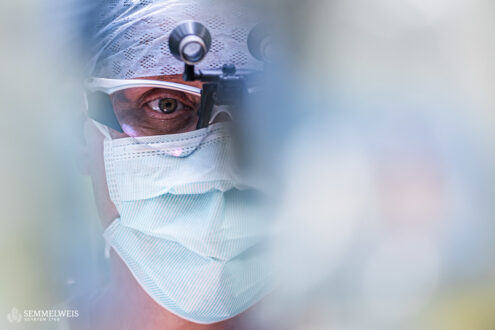
“Cardiac surgery is one of the most creative branches of surgery. It is a field that captivates and enthralls you. You could say it is addictive: in cardiac surgery, the feedback is immediate, and the results are clear and dramatic. When patients are brought to us, they are often in a very serious or critical condition and literally fighting for their lives. After appropriate and successful surgery, and following the necessary rehabilitation, they are healthy again.”
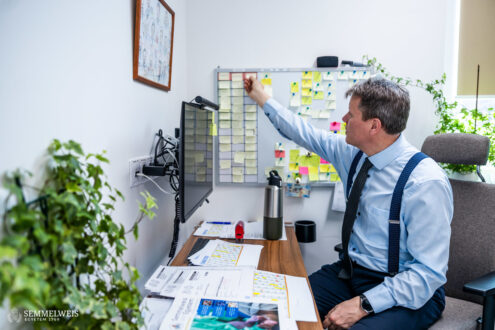
Part of the late afternoon is spent at the desk. As specialty lead head surgeon, head of the Department of Cardiac Surgery, and a speaker at numerous domestic and international conferences, he has a lot to do. In order not to lose motivation and to achieve immediate, visible, and tangible results, Dr. István Hartyánszky has developed a unique system: each Post-it note represents a task to be completed. The daily quota is to remove at least the line of “top 3 priority” notes from the board…
Éva Fekete-Obreczány
Translation: Dr. Balázs Csizmadia
Photos by Bálint Barta – Semmelweis University
